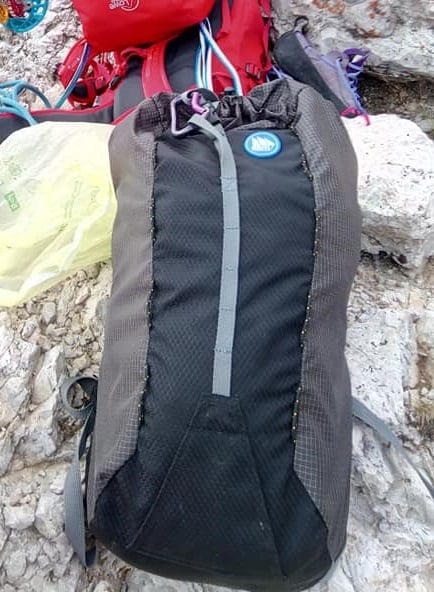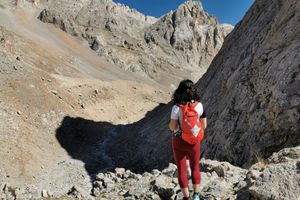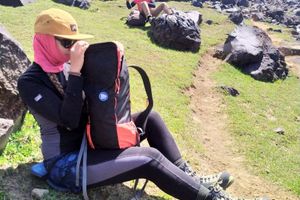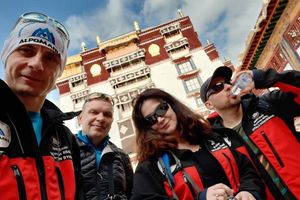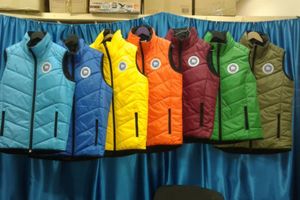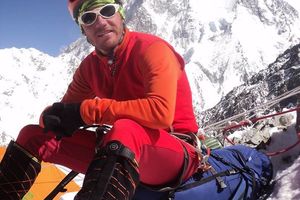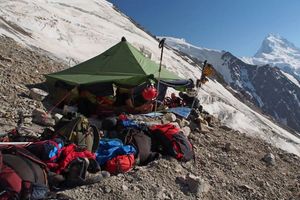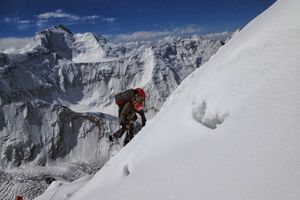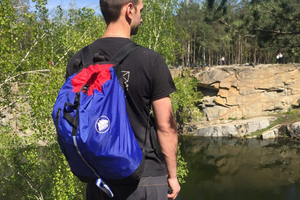Recently, I have been actively using the Guide 30 backpack from Fram Equipment. It's a new model. That's why I want to write a few words about how to use, and share a few photos. Let's go!
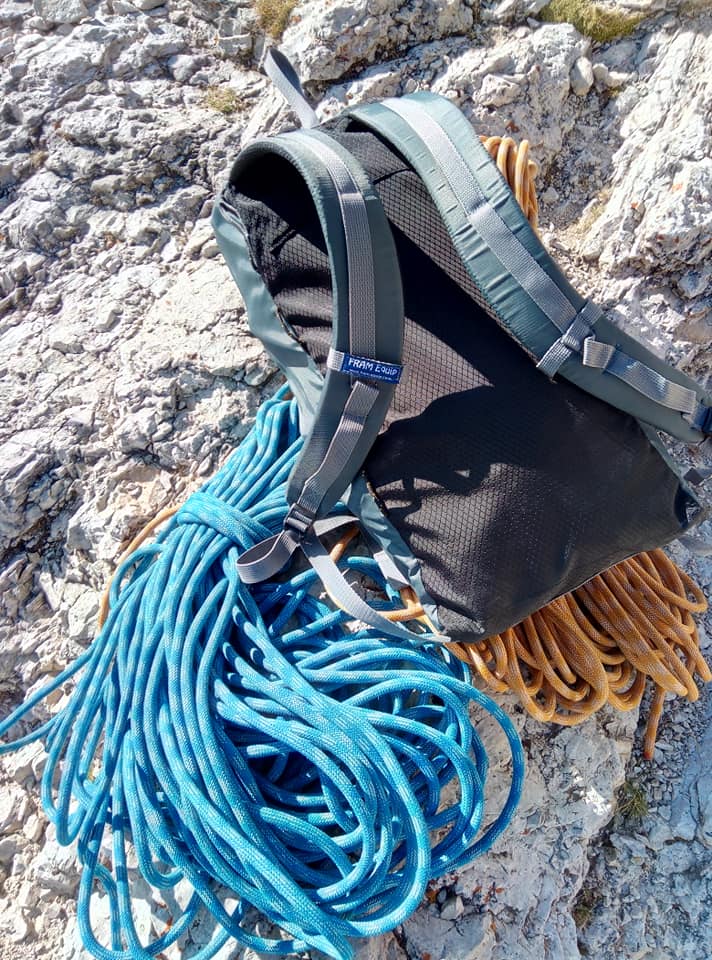
The backpack was created to be lite, without a belt, without a reinforced back - with absolute weight minimization. I think it worked
The backpack easily fit 2 ropes at 60m, private special equipment, a small snack.
The valve was fastened only during the flight, never in the mountains.
Self-locking loop was enough while I was using a quickdraw. It was too short for carabine.
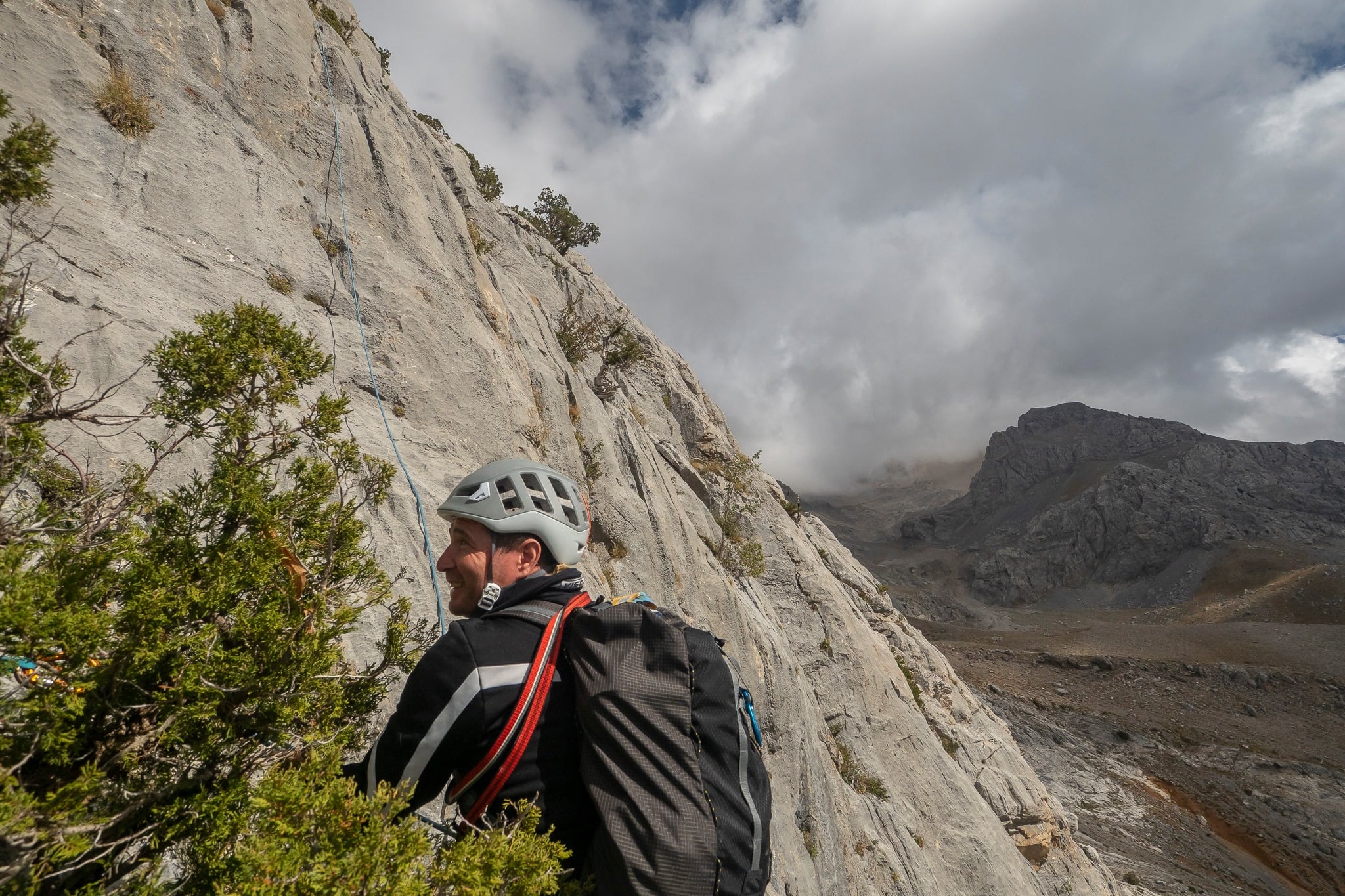
I've used Guide 30 in 4 different ways:
- sportive rock climbing in autumn
- combined climbing in summer
- educational climbing in autumn
- hand baggage during a flight
Now some more details:
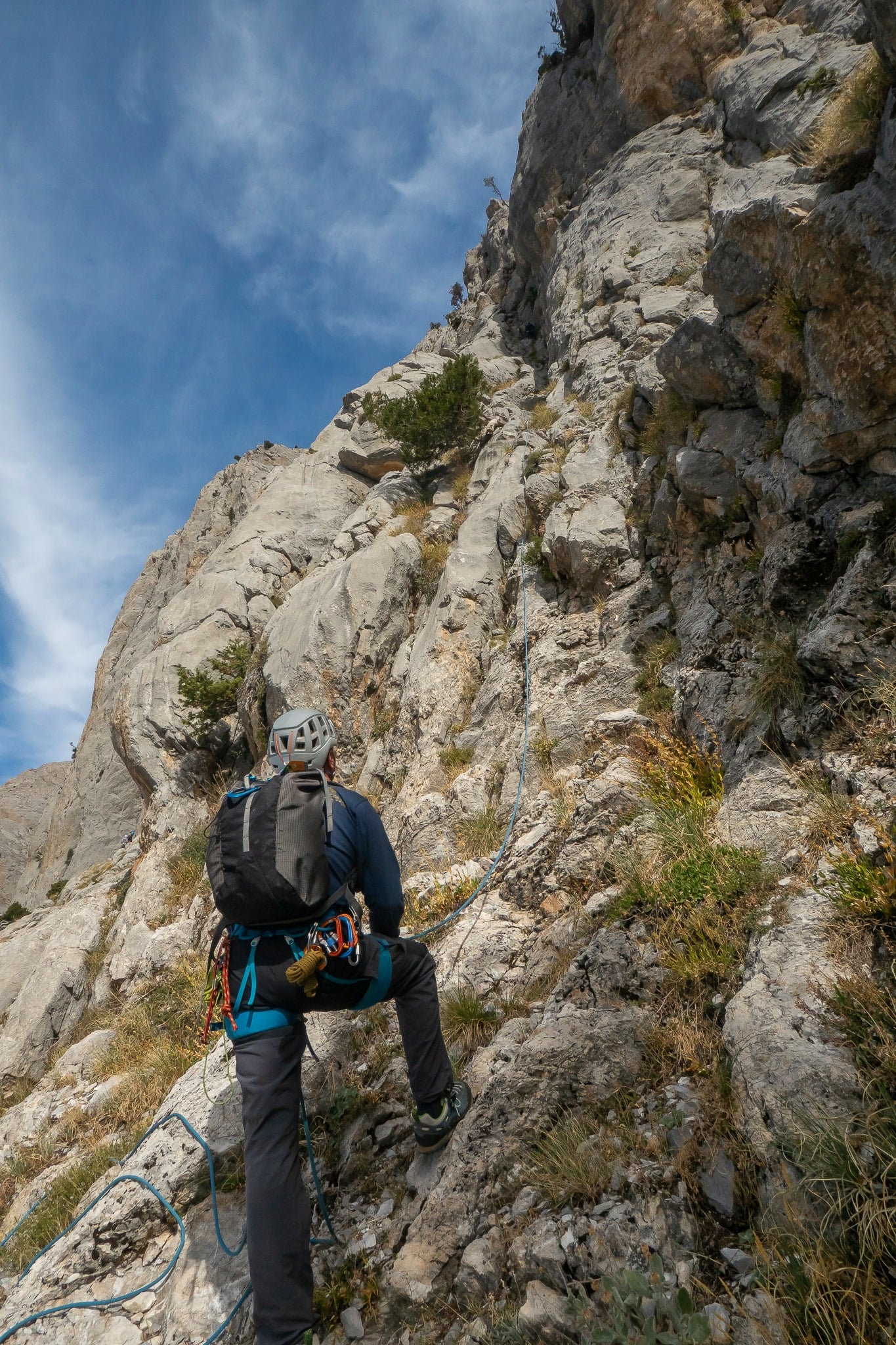
1. sportive rock climbing in autumn
The testing was in October in the Alps, when you need light warm clothes in morning, even not talking about equipment, and then you need to pack it. Size is accurate. Inside the backpack were two pairs of shoes, two light coats, first aid kit, two small water bottles and snack.
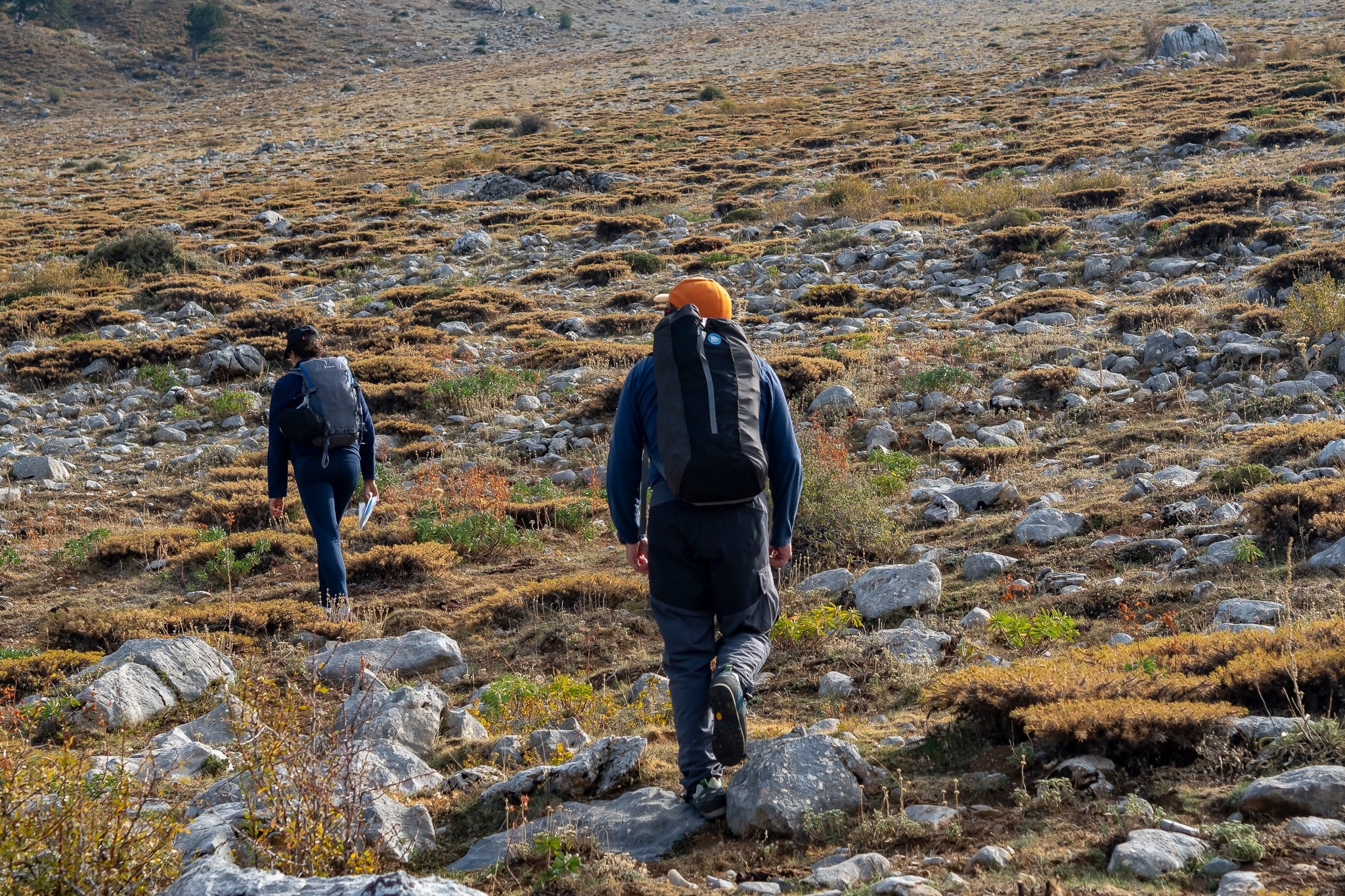
2. combined climbing in summer
Testing was in high mountains (Alps) with a long break in glacial zone for education.
The backpack was capacious enough for one person (personal clothes, snack, equipment), so I recommend it for any alpinist in group.

An important aspect is the presence of both rock and ice equipment together, and also not a small water bottle, but a large tea thermos wish needs more space. The backpack perfectly coped with this task, and under a back I put a usual seating mat.
Another important aspect is that the backpack didn't get wet after the whole day of rescue classes.
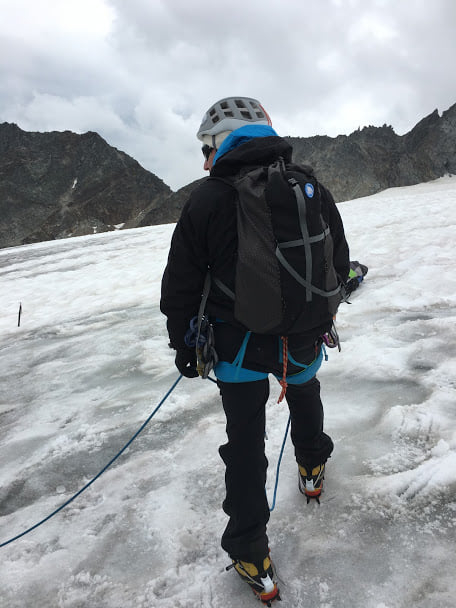
3. educational climbing in autumn (Turkey)
I emphasize the time of year, because the place of training wasn't "warm Turkish rocks". Dedegel high is 3000, base camp was on 1500. Warm clothes were essential. After wearing, they must fit in the backpack.
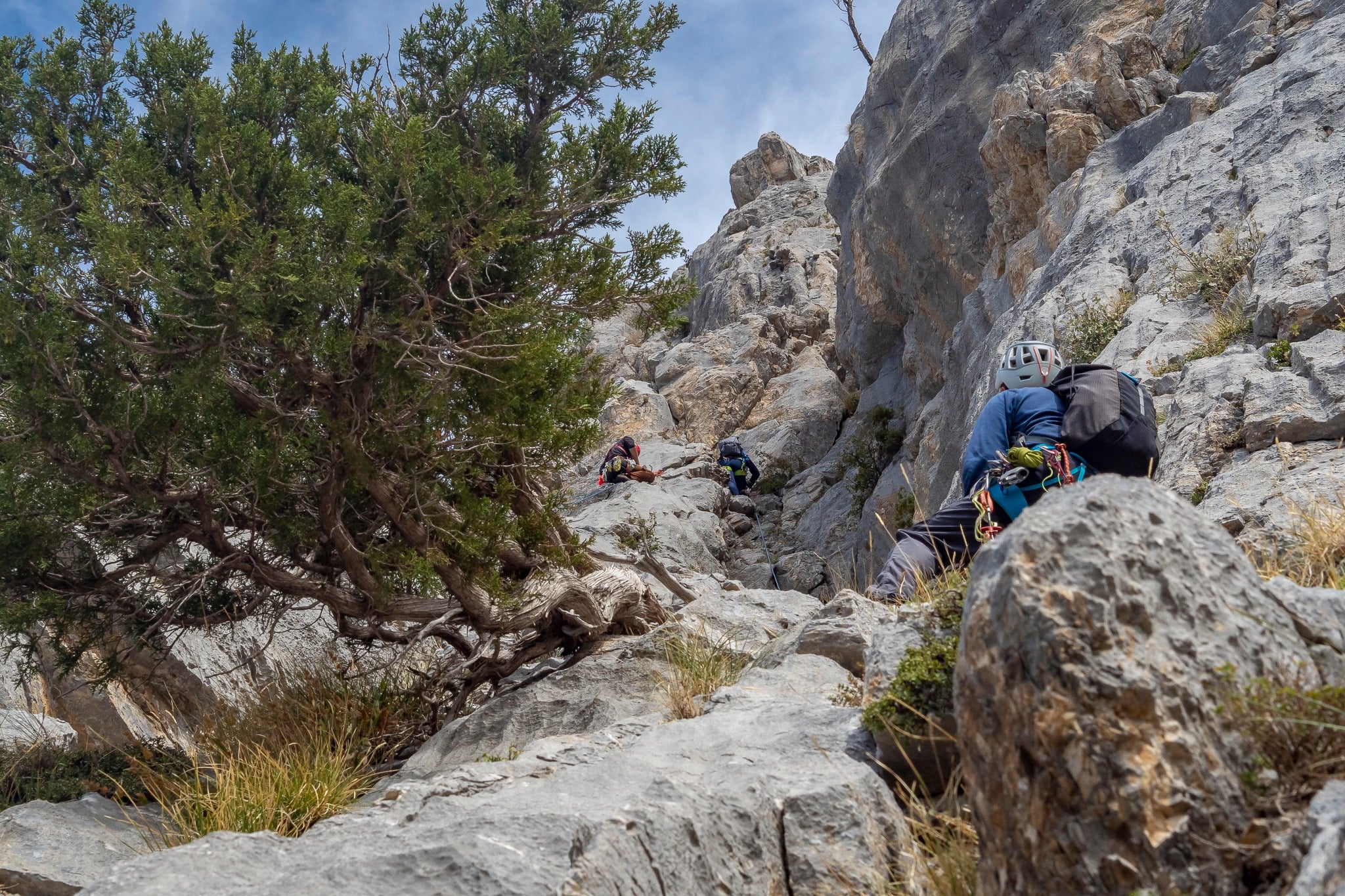
Because the event was educational different types of ropes were used, hammers and sets of hooks were taken out, walkie-talkie, snack and lunch, wallets and documents.
The backpack was big enough for day trips and ascents.
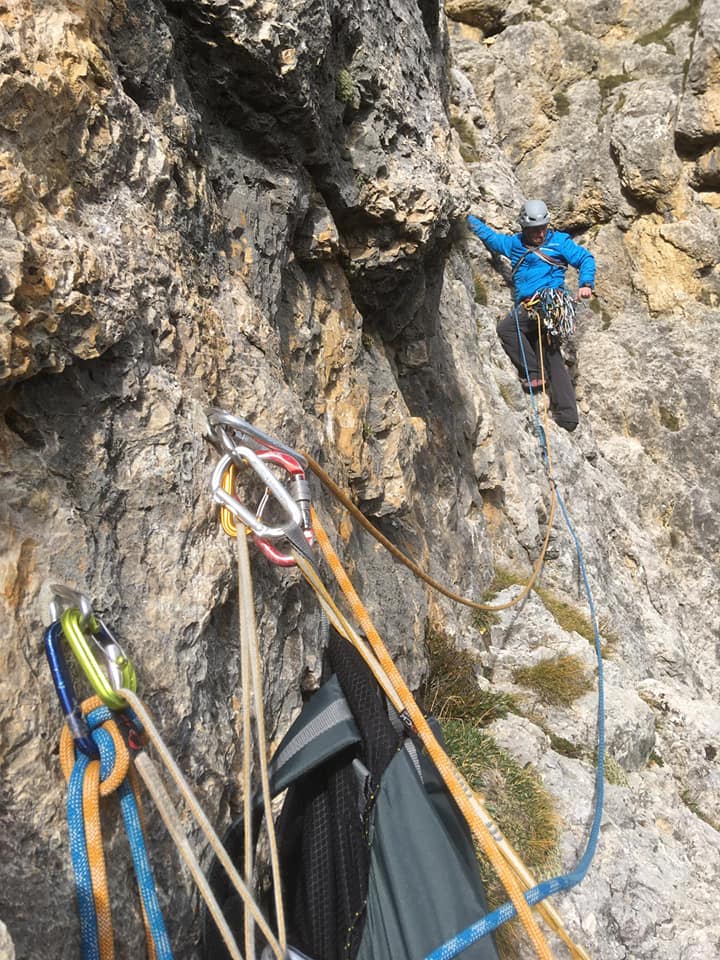
4. hand baggage during a flight.
Valve fastening was very useful in this case. The valve is fastened at 4 points and visually make the backpack bigger or smaller.
After depart from rainy and cold Munchen was very pleasant to put worm clothes and boots to the hand baggage and take out some sandals and shorts.
Except worm clothes I've put there 9 beer cans and a lot of alpinist stuff ![]()

Things to be improved:
- The backpack is to bid for one-day trips in summer, creating different sizes would be great. Smaller one could be good for rock climbers.
- The rope straps were clearly redundant, both "halves" of 60m fit inside the backpack. However, it may be fair only in my case?
- Make the pocket inside (for the wallet) a little wider. I put my wallet, car keys and sneakers there - it could hardly get in.
- Self-insurance strap is a little too short for 1 carbine, but it's easily fixed with small quickdraw.
- The backpack itself is very strong and incomparable with the first variation. Turkish rocks have very sharp edges, they can cut any textile like a knife. Just the facts.
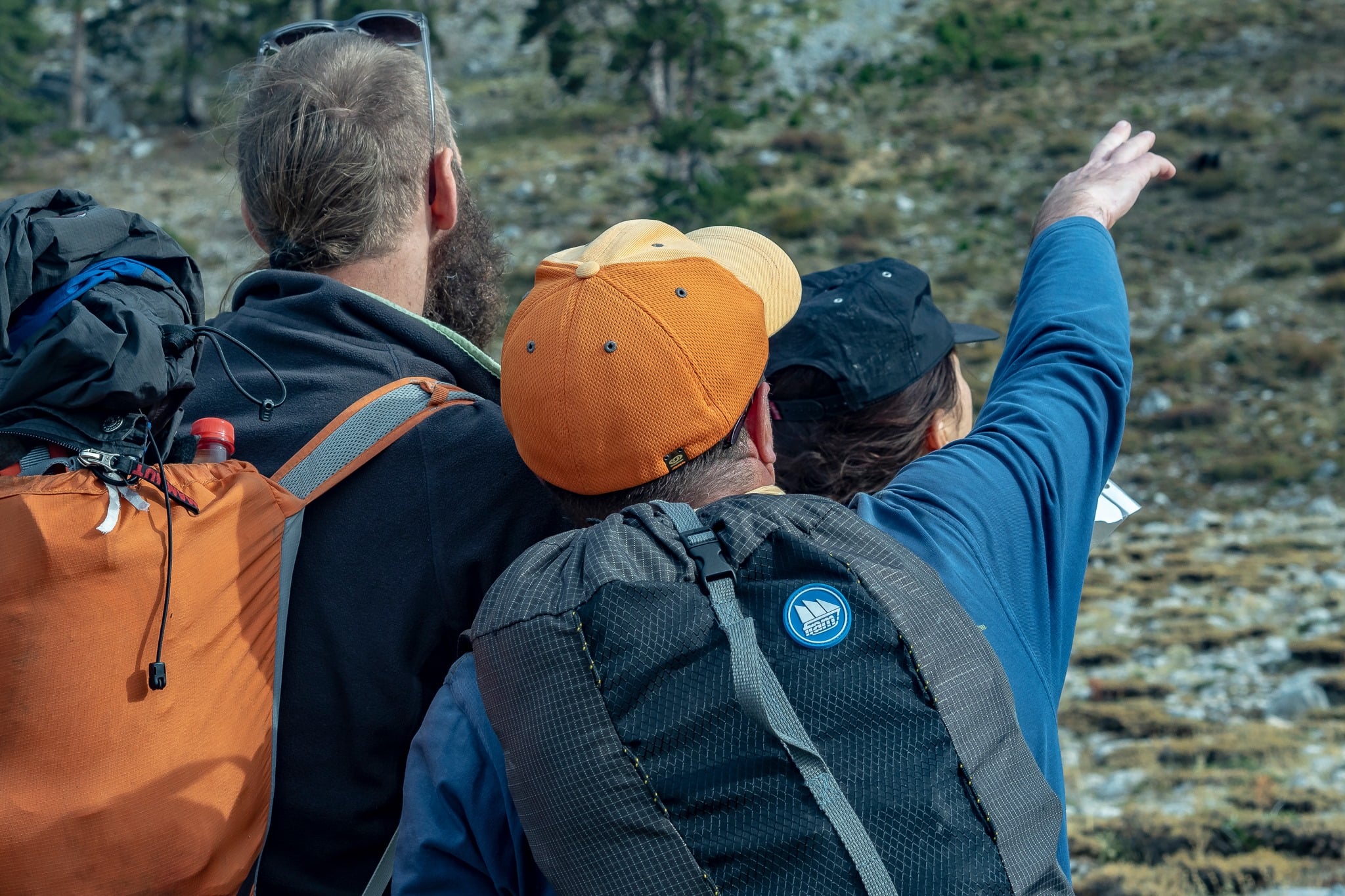
All in all I liked the backpack for all parameters essential for a backpack created for one day ascent. Fabric strength, durability of accessories, capacity, weight, water resistance and price - everything was on high level. I really hope that the durability of the backpack will also be excellent! Thank you!
























